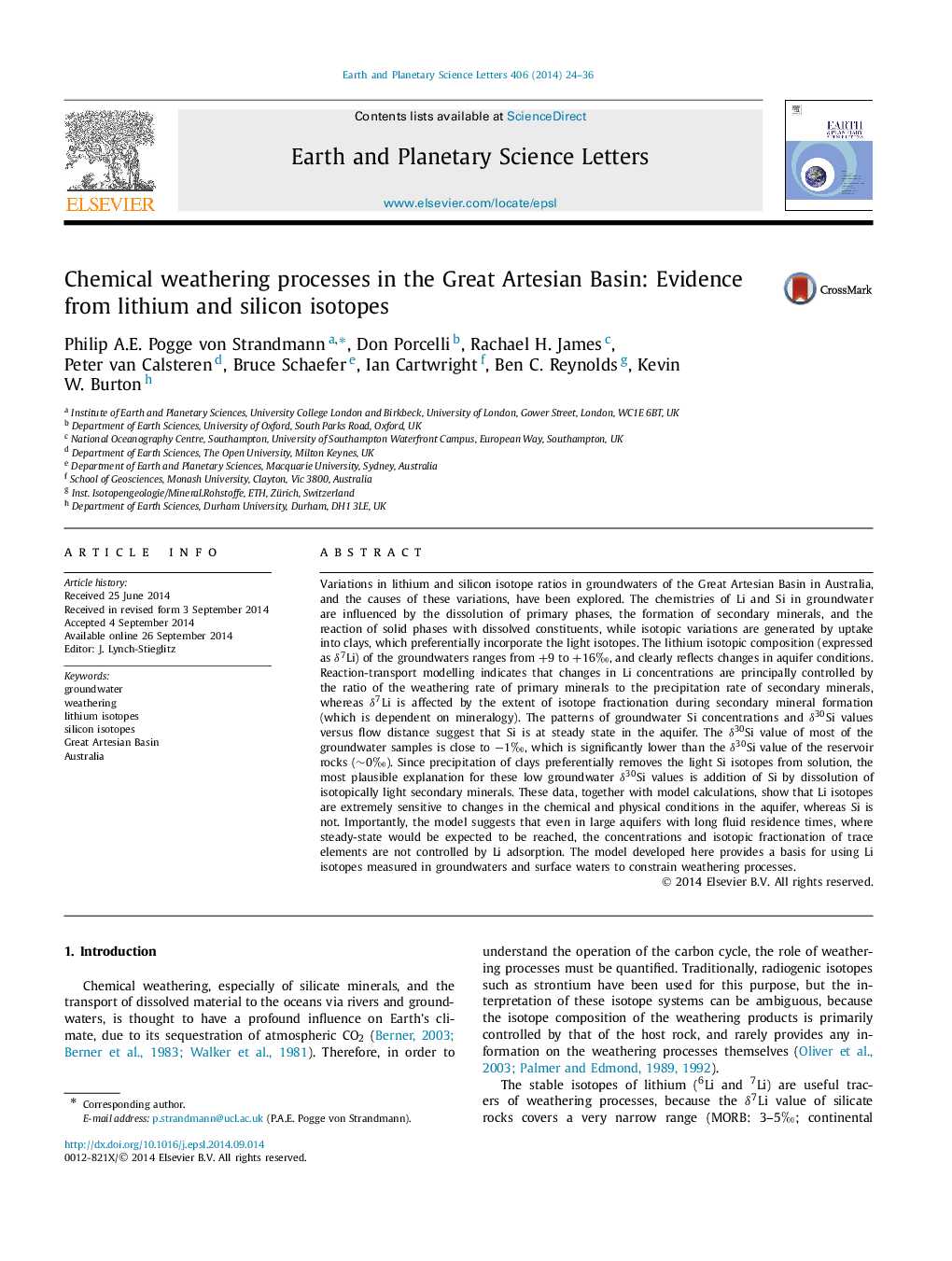| کد مقاله | کد نشریه | سال انتشار | مقاله انگلیسی | نسخه تمام متن |
|---|---|---|---|---|
| 6428961 | 1634750 | 2014 | 13 صفحه PDF | دانلود رایگان |
- We examine Li and Si isotopes in groundwaters from Australia.
- Li isotope ratios vary considerably, in contrast to Si isotopes.
- A new reactive-flow model is used to examine the controls during weathering.
- δLi7 depends on weathering to precipitation rate, and fractionation by clay formation.
- δSi30 depends on the isotope composition of the rocks being weathered.
Variations in lithium and silicon isotope ratios in groundwaters of the Great Artesian Basin in Australia, and the causes of these variations, have been explored. The chemistries of Li and Si in groundwater are influenced by the dissolution of primary phases, the formation of secondary minerals, and the reaction of solid phases with dissolved constituents, while isotopic variations are generated by uptake into clays, which preferentially incorporate the light isotopes. The lithium isotopic composition (expressed as δLi7) of the groundwaters ranges from +9 to +16â°, and clearly reflects changes in aquifer conditions. Reaction-transport modelling indicates that changes in Li concentrations are principally controlled by the ratio of the weathering rate of primary minerals to the precipitation rate of secondary minerals, whereas δLi7 is affected by the extent of isotope fractionation during secondary mineral formation (which is dependent on mineralogy). The patterns of groundwater Si concentrations and δSi30 values versus flow distance suggest that Si is at steady state in the aquifer. The δSi30 value of most of the groundwater samples is close to â1â°, which is significantly lower than the δSi30 value of the reservoir rocks (â¼0â°). Since precipitation of clays preferentially removes the light Si isotopes from solution, the most plausible explanation for these low groundwater δSi30 values is addition of Si by dissolution of isotopically light secondary minerals. These data, together with model calculations, show that Li isotopes are extremely sensitive to changes in the chemical and physical conditions in the aquifer, whereas Si is not. Importantly, the model suggests that even in large aquifers with long fluid residence times, where steady-state would be expected to be reached, the concentrations and isotopic fractionation of trace elements are not controlled by Li adsorption. The model developed here provides a basis for using Li isotopes measured in groundwaters and surface waters to constrain weathering processes.
Journal: Earth and Planetary Science Letters - Volume 406, 15 November 2014, Pages 24-36
